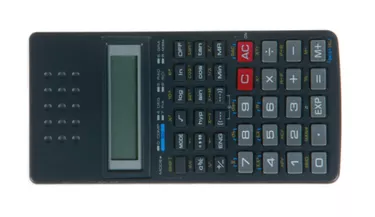
Net present value (NPV) incorporates the time value of money principle, which states that a dollar received in the future is worth less than one received today, because a dollar received today can earn investment returns. NPV equals the sum of the present values of an investment's future cash flows minus the initial investment cost. Present value is today's dollar value of a future cash flow. Future cash flows are discounted, or converted into today's value, using a discount rate, which is the return they could earn in a similar investment. A positive NPV investment increases value for an investor; a negative one decreases value.
Step 1
Substitute the expected cash flow, discount rate and year into the equation PV = x / ((1 + r) ^ n) for each year an investment is expected to be held. PV is present value; x is the cash flow received at the end of the year; r is the discount rate; and n is the year. Cash flows may be negative. For example, $100 received at the end of year one with a 10 percent discount rate equals 100 / ((1 + 0.1) ^ 1).
Video of the Day
Step 2
Calculate the present value of the first year's cash flow by pressing "100," divide button, "(," "(," "1," "+," "0.1," ")," "^," "1," ")" and "=" on the calculator. This equals $90.91.
Step 3
Calculate the present value of $100 received at the end of the second year by pressing "100," divide button, "(," "(," "1," "+," "0.1," ")," "^," "2," ")" and "=" on the calculator. This equals $82.64.
Step 4
Calculate the sum of the present values of the cash flows received in years one and two by pressing "90.91," "+," "82.64" and "=" on the calculator. This equals $173.55.
Step 5
Subtract a $150 initial investment cost from the sum of the present values of the cash flows by pressing "173.55," "-," "150" and "=" on the calculator. This equals $23.55, which is the NPV of a two-year investment with a 10 percent discount rate, $150 initial cost and $100 in cash flows at the end of each year.
Tip
Some calculators identify the exponent button with something other than a caret sign, such as an “x” with a “y” exponent.
Video of the Day